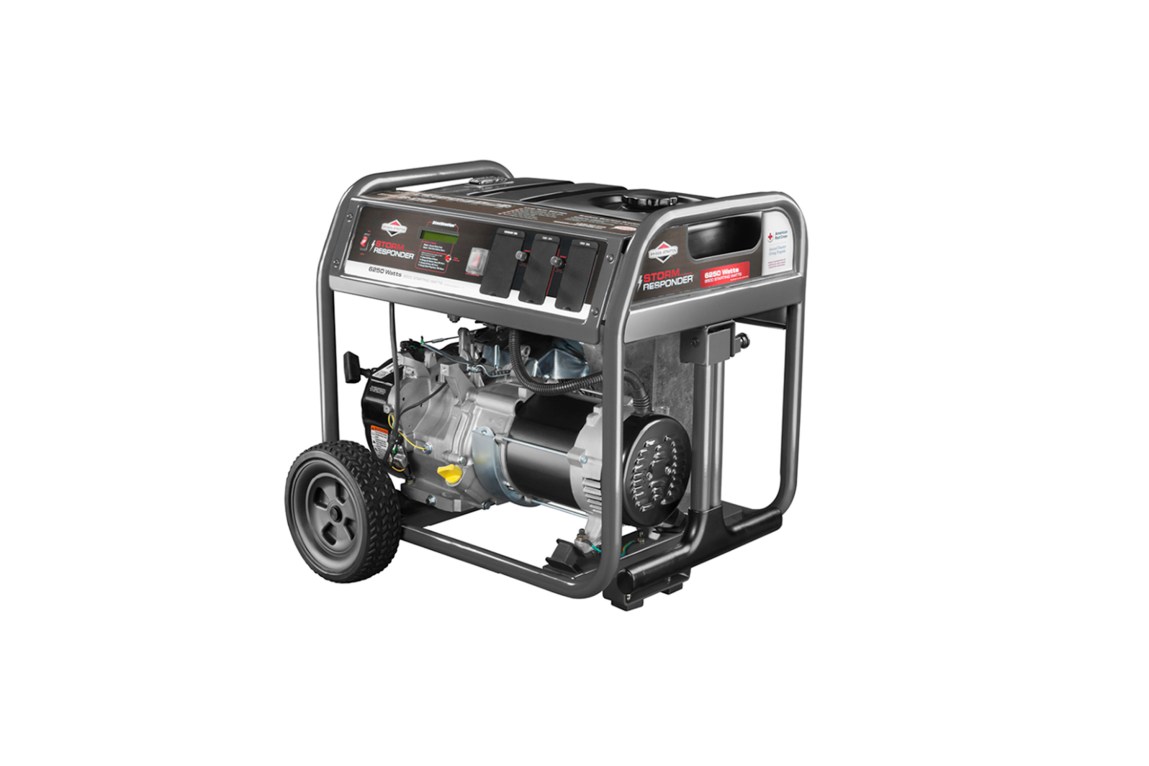The generator industry’s promised fix for deadly carbon monoxide poisoning was put to the test last year on a narrow patio outside Demetrice Johnson’s home after Hurricane Ida plunged much of Louisiana into darkness.
Johnson’s brand-new generator — equipped with a safety mechanism that manufacturers have said prevents “more than 99%” of carbon monoxide poisoning deaths — hummed into the night, inches from her family’s back door on Sept. 1, 2021, powering an air conditioner and a refrigerator.
If carbon monoxide levels got too high, the generator was designed to automatically sense the danger and trigger a shut-off switch.
But by the time emergency responders entered the three-bedroom brick house in Jefferson Parish the next morning, Johnson and her children, 17-year-old Craig Curley Jr. and 23-year-old Dasjonay Curley, were dead. They had been poisoned by exhaust fumes that flowed from the generator into their home, according to a sheriff’s office report, exposing a safety deficiency that federal officials and consumer advocates have warned about.
The safety switch’s failure to save Johnson and her children is detailed in an April report by the Consumer Product Safety Commission (CPSC) that was obtained this month by ProPublica, The Texas Tribune and NBC News through an open records request. The federal report followed an investigation by the news organizations that detailed the family’s deaths and found that attempts to make portable generators safer have been stymied by an oversight process that empowers manufacturers to regulate themselves, resulting in limited safety upgrades.
CPSC investigators couldn’t say whether the shut-off sensor on Johnson’s 6,250-watt Briggs & Stratton Storm Responder had activated at any point during the night, but when emergency responders arrived the next morning, the generator was in the “on” position with an empty fuel tank.
“This tragic incident exemplifies one of the limitations” of voluntary safety upgrades that have been championed by generator makers in recent years, one of the agency’s engineers wrote in a letter to the industry that accompanied the report.
Briggs & Stratton did not respond to messages requesting comment.
The Portable Generator Manufacturers’ Association has repeatedly said that automatic shut-off sensors would prevent more than 99% of deaths associated with what they call “misuse.” Joseph Harding, the group’s technical director, said in an email that the association stands by that claim in the wake of the CPSC investigation into the Louisiana case. Harding said no safety feature can prevent 100% of deaths.
“Unfortunately, the incident in Louisiana was a perfect storm of misuse operating in an outdoor location,” he said. “This tragic situation was in the ‘less than 1%’ category.”

The findings add to growing scrutiny of an industry under pressure to make its products safer. In February, the CPSC announced that it intended to propose new mandatory regulations in its 2023 fiscal year to force stricter generator safety upgrades. And in June, a congressional committee launched an investigation, which remains open, into whether portable generator manufacturers have done enough to protect the public from carbon monoxide poisoning.
Portable generators are one of the deadliest consumer products on the market, killing about 80 people in the U.S. each year and poisoning thousands of others. The machines, used to power medical equipment and appliances during electrical outages, emit toxic levels of carbon monoxide fumes that can turn deadly when allowed to build up inside homes.
Carbon monoxide deaths caused by generators predictably follow nearly every major power outage caused by extreme weather, which scientists say is becoming more common with climate change. Generators played a role in at least 10 deaths in Texas during the February 2021 winter storm and electric grid failure, according to medical examiner investigations and incident reports. The Louisiana Department of Health reported that at least six people, including Johnson’s family, died of carbon monoxide poisoning after Hurricane Ida.
Federal regulators have known about these dangers for more than two decades, but the CPSC has not implemented mandatory safety standards that would require manufacturers to vastly reduce carbon monoxide emissions. Instead, the agency allowed the industry in 2018 to develop its own less costly solution: letting manufacturers voluntarily outfit generators with sensors that are supposed to automatically turn off the engines when carbon monoxide builds up to an unsafe level around them.
Harding, the generator industry representative, emphasized that generators should only be operated outside with the exhaust pointed away from windows and doors. He directed reporters to the industry’s public awareness campaign, which instructs users, “To protect yourself from these carbon monoxide emissions, all you have to do is take it outside.”
Photos included in the CPSC’s investigation show that the generator that killed Johnson and her children was placed inches from a back door, with the exhaust pointed toward the house. Because the generator was outside, the carbon monoxide safety sensor was unable to measure the amount of gas flowing through the back door and building up inside, a flaw in the safety mechanism that the CPSC and consumer advocates have highlighted.
Marietta Robinson, a commissioner with the CPSC from 2013-18, said the Louisiana incident “demonstrates perfectly that incorporating a shut-off switch in a portable generator instead of lowering emissions simply is not a way to protect consumers from this hidden hazard.” She noted that Johnson’s side yard was so small — only a few feet wide, according to photos — that it would have been impossible to follow generator makers’ instructions to keep the machine about 20 feet from the house.
Read More
As part of the CPSC’s announcement in February that it planned to propose new mandatory regulations, the agency released a report that studied the effectiveness of the generator industry’s voluntary safety measures. It concluded that too few manufacturers had adopted safety upgrades and that, based on a series of simulations run by the agency, carbon monoxide shut-off switches were not effective in preventing poisonings and deaths in some scenarios. Notably, the agency found, automatic shut-off sensors don’t work when users set up the machines outside with the exhaust pointed toward windows or doors — the same scenario that killed Johnson and her children.
Based on its own simulations, the agency found that automatic shut-off sensors could prevent 87% of deaths caused by generators — lower than the 99% figure promoted by the industry — while still leaving some consumers exposed to carbon monoxide levels toxic enough to require hospitalization.
CPSC staff members also tested a more stringent approach of equipping the machines with both shut-off sensors and engines that emit far less carbon monoxide and found that the combination would eliminate “nearly 100%” of generator deaths and the vast majority of hospitalizations.
In comments to the CPSC, industry officials have argued that requiring generators to emit less carbon monoxide in addition to shut-off switches “would only further exacerbate the burden on manufacturers, add unnecessary cost, and not provide any significant increase in benefit over the shutoff approach alone.”
Do You Have a Tip for ProPublica? Help Us Do Journalism.
Got a story we should hear? Are you down to be a background source on a story about your community, your schools or your workplace? Get in touch.





















